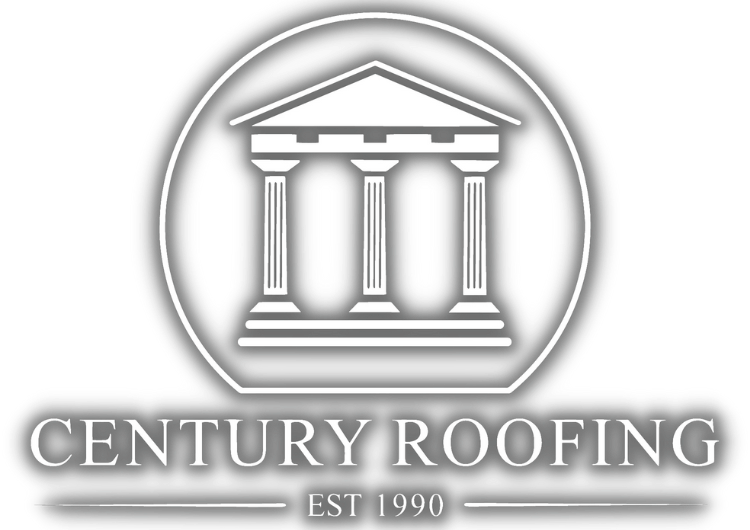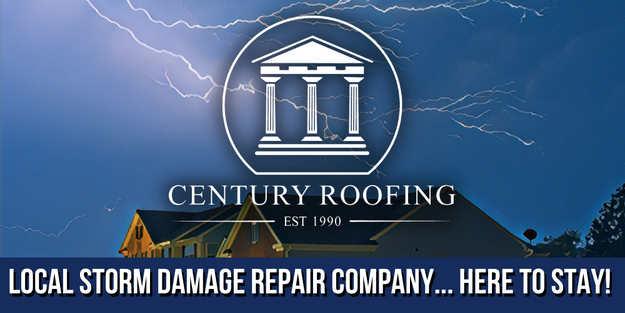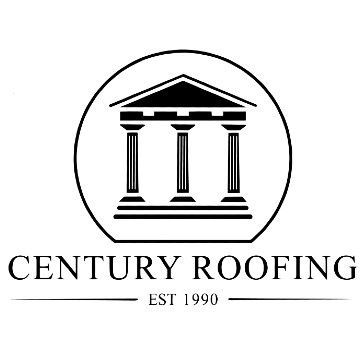FREE Shingle Upgrade On ALL Roof Replacements!
FREE Shingle Upgrade On ALL Roof Replacements! Learn More
Kansas City's Go-To Source
for Expert Roofing Services




Serving Kansas City For 30+ Years
Proudly WomAn-Owned & Operated
MANUFACTURER TRAINED & CERTIFIED
Prioritizing safety with AI & Drone Technology
WE SPECIALIZE IN ROOFING.
NOTHING MORE, NOTHING LESS!
Unlike other companies that install roofing, siding and windows, Century Roofing specializes in residential and commercial roofing – all types and all materials. Nothing more, nothing less!
OUR Specialties
Safe and Stress-Free Roofing Replacement
Protecting your family & Investment!
We know that the roof replacement process can be stressful for families, business owners, and property managers. But, our team is always aware that we are roofing someone’s home – and one of their largest financial investments. So, we do what we can to make the process as stress-free as possible.
Voted Best Roofing Company in Johnson County because we focus on safety, customer service, and quality workmanship. So when it’s time for a roof replacement in KC, give Century Roofing a call – and we will handle the rest.
OUR PROCESS
SERVING THE KANSAS CITY METRO SINCE 1990
Step 1
Schedule your FREE Roofing Inspection
Scheduling a roof inspection is easy with Century Roofing. Simply click the chat bubble in the bottom right corner of our website or call 913-422-0099 to talk with one of our friendly customer service reps. Or – if you prefer– fill out this contact form on our website, and we will contact you to schedule a visit.
Step 2
Deploy Certified Roofing Inspector
Our
highly trained Inspectors
will use years of experience and state-of-the-art drone & AI technology to examine and photograph your roof – identifying damage, wear and abnormalities. We will inform you and guide you through the insurance claim process if we discover any significant damages.
Step 3
Provide a customized plan & in-depth quote
Some roof repairs and replacement projects are urgent. That's why, our roof inspectors will quickly provide a free in-depth roofing plan that gives our recommendations, options, and an accurate quote. Once decided, we will schedule a date and time that will have satisfactory weather & works for you & your family.
Step 4
Complete your project
Once your project date has arrived we’ll arrive on time to complete your roof. Our roofing crews will quickly begin prepping and ultimately installing your roofing system. Once installed we will clean up any roofing debris leaving you and your family happy.
That’s what 30+ years of experience looks like.
we install & repair
all roofing types
get the roof you deserve!
Century Roofing has served the Kansas City community for over three decades. We install all types of residential roofing materials, including asphalt composition shingles, clay and concrete tile, metal roofs, or wood shingles (shakes).
The best part about Century Roofing is that we work with various roof system manufacturers, including TAMKO, GAF, CertainTeed, Owens Corning, and Stoneworth. These companies are known for producing the best roofing products on earth and offer a wide range of styles, colors, and price points.
STORM DAMAGE REPAIR
Helping You when You Need It Most...
Living in the KC Metro, you know just how damaging our storms can be. So if your neighborhood recently experienced high winds, hail or tornado activity contact our experienced roofing team for a free roofing inspection.
AREAS WE SERVICE
Belton, MO
Blue Springs, MO
Gladstone, MO
Independence, MO
Kansas City, KS
Kansas City, MO
Lee's Summit, MO
Lenexa, KS
Liberty, MO
Loch Lloyd, MO
North Kansas City, MO
Olathe, KS
Parkville, MO
Platte Woods, MO
Pleasant Valley, MO
Raytown, MO
Shawnee, KS
Tonganoxie, KS
All cities in the KC metro area!
CHOOSE The Best Roofing Contractor in Kansas City
You deserve to work with residential roofing specialists who can help you choose the best solutions for your home. Whether you need a new roof contractor to install a new roof on your property or require a roofing contractor capable of completing maintenance and repairs, you can find the most dependable contractors with our company. We have decades of experience in the roofing industry and proudly serve homeowners throughout the Kansas City, KS and MO area. We invite you to contact us to discuss your roofing needs and learn how we can help you get the best results at a competitive price.
WHAT YOUR NEIGHBORS ARE SAYING...
30,000+ Completed Roofs throughout the Kansas City Metro

Response was FAST! They came the next day and repaired the 3 issues I had. The men repaired in 30 minutes and took pictures to show me and told me how they completed the work.
Darlene Miller - Riverside, MO

I am doing a warranty claim on our shingles/roof with Tamko. Mary McKinney came out today from Century. He was early for the appointment which I LOVE people to come early or be on time. He was polite and well mannered. Very professional - did an inspection of shingles, took samples and pictures for me which is exactly what I needed for my claim. Will definitely use again.
Cynthia Fishman - Lenexa, KS

I have worked with Century Roofing and specifically Dusty Keaton and Chad Amis for many years. They have installed roofs on my own personal homes as well as hundreds of homes we have built and dozens of resale homes we have sold. They are honest, professional and trust worthy. Their prices are fair and their service is the best. There isn't another roofer in Kansas City that is more honest and has a better track record. If you are considering a new roof in Kansas City - there is only one call to make.
Jeremy Applebaum - Prairie Village, KS

Upon buying my first home, I knew I needed a new roof as soon as I moved in. A big investment on top of a big investment. Thankfully, Century Roofing came highly recommended by a friend and I couldn’t be happier with their work. They were professional, cleaned up after themselves and even took care of roofing over a problem chimney so I don’t get critters in the house. Their great work was a huge load off my mind.
Megan Haave - Kansas City, MO

Worked with Marty McKinney. Very quick response. Worked seamlessly with our insurance. He really took good care of us. The installers were efficient and knowledgeable. We are very satisfied with our beautiful new roof
Alvin Levin - Olathe, KS

Everyone we had contact with was very responsive and professional, particularly Scott Ratzburg. The work was done efficiently and on time and we were always informed of the progress and next steps. Clean up was mindful and extensive, which we appreciated. Scott and his crew did a great job!!
Jan Abbey - Overland Park, KS

They were timely in getting the job scheduled and completed. Their bid came in lower then others I received bids from, but the job was as good as the more expensive could have done.
Mark Yulich - Kansas City, KS

We had a tree unexpectedly fall on our roof and reached out to Century Roofing per recommendations from coworkers. Marty was the contractor we worked with and I can’t say enough good things about him. He was prompt, professional, polite and honest. He was helpful every step of the way. My husband and I are grateful we trusted Marty with our roof. Would highly, highly recommend this company!
Marlee Myracle - Overland Park, KS

Century installed my roof back in 2010. I had some shingles come down recently after heavy winds. I called their office on a Monday and spoke to a nice lady who took my repair request. The next morning, I was contacted by the repairman Scott, and he was at my home within the hour. He repaired the roof problem, and sealed some of the attic vents as well. Scott was very pleasant and professional and I am very glad I used Century to install the roof and keep it protecting my home.
Suzette Hoyt - Overland Park, KS

We worked with Chad Amis who set everything up for us. The workers arrived early and worked throughout the day to put on our new roof and were finished the same day. They cleaned up well and the roof looks great. Chad responded quickly to any questions that we had. A job well done (and no I am not a relative of anyone who works there).
Tim Walsh - Shawnee, KS

A friend referred me to Century Roofing when I had storm damage on some roofs. Chad Amis made the process so easy by working with my insurance company. Chad was responsive, knowledgeable and extremely helpful in selecting roofing and gutter colors. All the work was completed on schedule and and the new roofs and gutters look great. I highly recommend Century Roofing and Chad!
Julie Blau - Overland Park, KS

John May did the inspection on my house when I sold it. He was very responsive to my calls and got the inspection done quickly so I could close on time! Excellent company, GREAT EMPLOYEE! Thank you John!
Jeanine Fast - Greenwood, MO

I have used Century Roofing several times for my rental properties and personal home. They are always responsive and efficient even with large jobs. The company and service is quality and the employees that do the work are incredibly hard working and through.
Anne Langdon - Prairie Village, KS

I used Century Roofing for a hail claim to my home. Chad Amis was a pleasure to work with and very informative, knowledgeable, and made sure I was taken care of in a timely manner. I would recommend Chad and Century Roofing and will use them in the future, should I have the need.
Paula Vilda - Olathe, KS

Chad Amis with Century roofing has been so easy to work with. My husband and I renovate homes as a side hobby/job and he is our go to guy for roofing! He is prompt, uses quality products and the roof always looks great! They also always pass inspections without issues when selling the homes.
Kelly Schwatken - Paola, KS

I worked with Century and Chad recently to put a new roof on my house. After getting multiple bids I decided to proceed with Century. I was so glad I did. Everything was done on time and on budget. I really appreciated that after the roof was put on, they didn’t think the job was done. The amount of time they spent cleaning up after made sure no nails may of been accidentally left behind for a car tire or one of my dogs to find. If you want a professional job done right the first time, I highly recommend Century and Chad.
Nicholas - Prairie Village, KS

Century Roofing roofed our new home two years ago. Since then, we have contacted them twice to look at water spots in our ceiling before repainting. Both times they sent a professional, efficient roofer out to inspect the problem. In the first instance, he found that a board had been left on the roof and corrected it. Today in 100 degree temperature, the roofer caulked a few areas that may have caused leakage during a wind storm. We are so pleased with Century's service and commitment to the quality of their work. I would highly recommend Century because they will do a great job and stand behind their work!
Kathy Whited - Raymore, MO

I had an excellent experience with Joe and Century. They are the best kept secret in KCK. They're very personal, but professional. They did just what they said they would do and more. Again I was very impressed with Joe C and the way he represents himself and Century. I will definitely do business with them again and will strongly recommend to others if they have roofing needs. Thanks Joe and Century! Your help is greatly appreciated!!!
Jerry Jones - Kansas City, KS

I rarely give review and only give review to those earned and deserved. So glad that I chose Century Roofing for the work to replace the roof out of 8 roofing companies. They finished the job on time as scheduled and affordable, and quality. Working with Joe was great, not only helpful, but responsive and very professional. Well done Century Roofing!!
Tommy DG - Bonner Springs, KS

I needed to replace my cedar shake roof with asphalt shingles and Century was the company I chose to do the work. I received three bids and Chad at Century was super responsive and very competitive. The communication was excellent. The crew showed up on time and completed the work quickly and the new roof looks awesome.
Bill Wood - Overland Park, KS

Chad and his guys did a great job replacing our leaking 30 year old roof on our almost 100 year old house. He came in and explained different kinds of roof venting and what would work best, what needed to be done and how long it would take. The guys showed up on time, kept the work environment clean which was hard to do because it was so windy, and finished in a timely fashion. They were all very polite and hard working. I received his name on a referral and was glad we used them. Thanks guys!
John Foley - Shawnee, KS

Chad and Century Roofing replaced our roof two weeks ago after a competing company had come by to "perform an inspection" and offered to initiate the claims process for me. I've lived across the street from Chad for two years, and I figured it would be good to get a second opinion. He explained how this other company works and how Century Roofing, the company he works for, differs. But more than that, he was responsive, explained everything clearly, and provided me with good information about the process. The other guys didn't even respond when I'd followed up to let them know I was canceling their bid. Chad was also extremely flexible. I have a toddler who naps during the day, and we were able to ensure the roof was done on the two days he was at daycare. His crew also did a great job of cleaning up after themselves. I'd highly recommend Century Roofing to anyone needing roof replacement or repairs.
Doug Messel - Olathe, KS

Amazing experience with my roof replacement. Kenny was extremely attentive and made sure everything was done beyond my expectations while the crew was very professional, working to get everything completed and cleaned up before heading home. Highly recommend Century!!!
Jane Clark - Gardner, KS

We've used Century Roofing / Chad Amis and his crew at Century Roofing for nearly 20 years for things like storm damage, gutter repair and new roofs on two homes. I'm sure there are cheaper roofing companies serving the KC area, but a roof is one of those things which falls in the "you get what you pay for" category. We won't sacrifice the integrity of our home for a few bucks. Plus the great service Chad provides before the sale and after the installation can't be beat (terrific planning and great follow up). And the workers, holy smokes - they wore me out just watching them. Never have we seen a crew work so hard. Yup - Century Roofing has our roofing business for sure.
Clark Lamoreux - Lane, KS

We needed to coordinate the roofing & gutter replacement through Century & painting through another vendor, so as to get the facia boards caulked & repainted before gutter re-installation. Century were totally accommodating. They let us know what to expect, then did precisely what they said they would do and when they promised. Due to a possibility of rain the next day they put a larger crew on our job and got the whole thing done, and done well, in 1 day. The work is top notch and looks great! Would be glad to recommend Century to one and all.
Rick Estrin - Olathe, KS

I had a very good experience with Century Roofing. I had them re-roof my house. They got me on the schedule quickly and had the job done in just a couple days. They cleaned up immediately and left my yard clear of any debris. Communication was great and the value can’t be beat.
Veronica Paida - Shawnee, KS
Kansas City's Go-To Source
for Expert Roofing Services




Serving Kansas City For 30+ Years
Proudly WomAn-Owned & Operated
MANUFACTURER TRAINED & CERTIFIED
Prioritizing safety with AI & Drone Technology
WE SPECIALIZE IN ROOFING.
NOTHING MORE, NOTHING LESS!
Unlike other companies that install roofing, siding and windows, Century Roofing specializes in residential and commercial roofing – all types and all materials. Nothing more, nothing less!
OUR Specialties
Safe and Stress-Free
Roofing Replacement
Protecting your family & Investment!
We know that the roof replacement process can be stressful for families, business owners, and property managers. But, our team is always aware that we are roofing someone’s home – and one of their largest financial investments. So, we do what we can to make the process as stress-free as possible.
Voted Best Roofing Company in Johnson County because we focus on safety, customer service, and quality workmanship. So when it’s time for a roof replacement in KC, give Century Roofing a call – and we will handle the rest.
OUR PROCESS
SERVING THE KANSAS CITY METRO SINCE 1990
Step 1
Schedule your FREE Roofing Inspection
Scheduling a roof inspection is easy with Century Roofing. Simply click the chat bubble in the bottom right corner of our website or call 913-422-0099 to talk with one of our friendly customer service reps. Or – if you prefer– fill out this contact form on our website, and we will contact you to schedule a visit.
Step 2
Deploy Certified Roofing Inspector
Our
highly trained Inspectors
will use years of experience and state-of-the-art drone & AI technology to examine and photograph your roof – identifying damage, wear and abnormalities. We will inform you and guide you through the insurance claim process if we discover any significant damages.
Step 3
Provide a customized plan & in-depth quote
Some roof repairs and replacement projects are urgent. That's why, our roof inspectors will quickly provide a free in-depth roofing plan that gives our recommendations, options, and an accurate quote. Once decided, we will schedule a date and time that will have satisfactory weather & works for you & your family.
Step 4
Complete your project
Once your project date has arrived we’ll arrive on time to complete your roof. Our roofing crews will quickly begin prepping and ultimately installing your roofing system. Once installed we will clean up any roofing debris leaving you and your family happy.
That’s what 30+ years of experience looks like.
we install & repair
all roofing types
get the roof you deserve!
Century Roofing has served the Kansas City community for over three decades. We install all types of residential roofing materials, including asphalt composition shingles, clay and concrete tile, metal roofs, or wood shingles (shakes).
The best part about Century Roofing is that we work with various roof system manufacturers, including TAMKO, GAF, CertainTeed, Owens Corning, and Stoneworth. These companies are known for producing the best roofing products on earth and offer a wide range of styles, colors, and price points.
STORM DAMAGE REPAIR
Helping You when You Need It Most...
Living in the KC Metro, you know just how damaging our storms can be. So if your neighborhood recently experienced high winds, hail or tornado activity contact our experienced roofing team for a free roofing inspection.
YOUR ROOFING COMPANY IN KANSAS CITY
SERVING KC METRO 34+ Years
When searching for a dependable roofing company in Kansas City, KS, you need one with decades of experience and a long-standing reputation for providing quality service at affordable prices. Whether you need a company for a roofing inspection or roofing repair services, you can trust our experienced roofers to give you high-quality service.
We inspect your roof to identify the problem and recommend the most appropriate solution, including roof leak repair, to restore function and maintain your property’s value. We offer residential roofing services in Kansas City, Prairie Village, Overland Park, Lawrence, and Leawood, KS.
You can trust we will do the job promptly and efficiently to guarantee the desired results.
AREAS WE SERVICE
Belton, MO
Blue Springs, MO
Gladstone, MO
Independence, MO
Kansas City, KS
Kansas City, MO
Lee's Summit, MO
Lenexa, KS
Liberty, MO
Loch Lloyd, MO
North Kansas City, MO
Olathe, KS
Parkville, MO
Platte Woods, MO
Pleasant Valley, MO
Raytown, MO
Shawnee, KS
Tonganoxie, KS
All cities in the KC metro area!
CHOOSE The Best Roofing Contractor in Kansas City
You deserve to work with residential roofing specialists who can help you choose the best solutions for your home. Whether you need a new roof contractor to install a new roof on your property or require a roofing contractor capable of completing maintenance and repairs, you can find the most dependable contractors with our company. We have decades of experience in the roofing industry and proudly serve homeowners throughout the Kansas City, KS and MO area. We invite you to contact us to discuss your roofing needs and learn how we can help you get the best results at a competitive price.
WHAT YOUR NEIGHBORS ARE SAYING...
30,000+ Completed Roofs throughout the Kansas City Metro

Response was FAST! They came the next day and repaired the 3 issues I had. The men repaired in 30 minutes and took pictures to show me and told me how they completed the work.
Darlene Miller - Riverside, MO

I am doing a warranty claim on our shingles/roof with Tamko. Mary McKinney came out today from Century. He was early for the appointment which I LOVE people to come early or be on time. He was polite and well mannered. Very professional - did an inspection of shingles, took samples and pictures for me which is exactly what I needed for my claim. Will definitely use again.
Cynthia Fishman - Lenexa, KS

I have worked with Century Roofing and specifically Dusty Keaton and Chad Amis for many years. They have installed roofs on my own personal homes as well as hundreds of homes we have built and dozens of resale homes we have sold. They are honest, professional and trust worthy. Their prices are fair and their service is the best. There isn't another roofer in Kansas City that is more honest and has a better track record. If you are considering a new roof in Kansas City - there is only one call to make.
Jeremy Applebaum - Prairie Village, KS

Upon buying my first home, I knew I needed a new roof as soon as I moved in. A big investment on top of a big investment. Thankfully, Century Roofing came highly recommended by a friend and I couldn’t be happier with their work. They were professional, cleaned up after themselves and even took care of roofing over a problem chimney so I don’t get critters in the house. Their great work was a huge load off my mind.
Megan Haave - Kansas City, MO

Worked with Marty McKinney. Very quick response. Worked seamlessly with our insurance. He really took good care of us. The installers were efficient and knowledgeable. We are very satisfied with our beautiful new roof
Alvin Levin - Olathe, KS

Everyone we had contact with was very responsive and professional, particularly Scott Ratzburg. The work was done efficiently and on time and we were always informed of the progress and next steps. Clean up was mindful and extensive, which we appreciated. Scott and his crew did a great job!!
Jan Abbey - Overland Park, KS

They were timely in getting the job scheduled and completed. Their bid came in lower then others I received bids from, but the job was as good as the more expensive could have done.
Mark Yulich - Kansas City, KS

We had a tree unexpectedly fall on our roof and reached out to Century Roofing per recommendations from coworkers. Marty was the contractor we worked with and I can’t say enough good things about him. He was prompt, professional, polite and honest. He was helpful every step of the way. My husband and I are grateful we trusted Marty with our roof. Would highly, highly recommend this company!
Marlee Myracle - Overland Park, KS

Century installed my roof back in 2010. I had some shingles come down recently after heavy winds. I called their office on a Monday and spoke to a nice lady who took my repair request. The next morning, I was contacted by the repairman Scott, and he was at my home within the hour. He repaired the roof problem, and sealed some of the attic vents as well. Scott was very pleasant and professional and I am very glad I used Century to install the roof and keep it protecting my home.
Suzette Hoyt - Overland Park, KS

We worked with Chad Amis who set everything up for us. The workers arrived early and worked throughout the day to put on our new roof and were finished the same day. They cleaned up well and the roof looks great. Chad responded quickly to any questions that we had. A job well done (and no I am not a relative of anyone who works there).
Tim Walsh - Shawnee, KS

A friend referred me to Century Roofing when I had storm damage on some roofs. Chad Amis made the process so easy by working with my insurance company. Chad was responsive, knowledgeable and extremely helpful in selecting roofing and gutter colors. All the work was completed on schedule and and the new roofs and gutters look great. I highly recommend Century Roofing and Chad!
Julie Blau - Overland Park, KS

John May did the inspection on my house when I sold it. He was very responsive to my calls and got the inspection done quickly so I could close on time! Excellent company, GREAT EMPLOYEE! Thank you John!
Jeanine Fast - Greenwood, MO

I have used Century Roofing several times for my rental properties and personal home. They are always responsive and efficient even with large jobs. The company and service is quality and the employees that do the work are incredibly hard working and through.
Anne Langdon - Prairie Village, KS

I used Century Roofing for a hail claim to my home. Chad Amis was a pleasure to work with and very informative, knowledgeable, and made sure I was taken care of in a timely manner. I would recommend Chad and Century Roofing and will use them in the future, should I have the need.
Paula Vilda - Olathe, KS

Chad Amis with Century roofing has been so easy to work with. My husband and I renovate homes as a side hobby/job and he is our go to guy for roofing! He is prompt, uses quality products and the roof always looks great! They also always pass inspections without issues when selling the homes.
Kelly Schwatken - Paola, KS

I worked with Century and Chad recently to put a new roof on my house. After getting multiple bids I decided to proceed with Century. I was so glad I did. Everything was done on time and on budget. I really appreciated that after the roof was put on, they didn’t think the job was done. The amount of time they spent cleaning up after made sure no nails may of been accidentally left behind for a car tire or one of my dogs to find. If you want a professional job done right the first time, I highly recommend Century and Chad.
Nicholas - Prairie Village, KS

Century Roofing roofed our new home two years ago. Since then, we have contacted them twice to look at water spots in our ceiling before repainting. Both times they sent a professional, efficient roofer out to inspect the problem. In the first instance, he found that a board had been left on the roof and corrected it. Today in 100 degree temperature, the roofer caulked a few areas that may have caused leakage during a wind storm. We are so pleased with Century's service and commitment to the quality of their work. I would highly recommend Century because they will do a great job and stand behind their work!
Kathy Whited - Raymore, MO

I had an excellent experience with Joe and Century. They are the best kept secret in KCK. They're very personal, but professional. They did just what they said they would do and more. Again I was very impressed with Joe C and the way he represents himself and Century. I will definitely do business with them again and will strongly recommend to others if they have roofing needs. Thanks Joe and Century! Your help is greatly appreciated!!!
Jerry Jones - Kansas City, KS

I rarely give review and only give review to those earned and deserved. So glad that I chose Century Roofing for the work to replace the roof out of 8 roofing companies. They finished the job on time as scheduled and affordable, and quality. Working with Joe was great, not only helpful, but responsive and very professional. Well done Century Roofing!!
Tommy DG - Bonner Springs, KS

I needed to replace my cedar shake roof with asphalt shingles and Century was the company I chose to do the work. I received three bids and Chad at Century was super responsive and very competitive. The communication was excellent. The crew showed up on time and completed the work quickly and the new roof looks awesome.
Bill Wood - Overland Park, KS

Chad and his guys did a great job replacing our leaking 30 year old roof on our almost 100 year old house. He came in and explained different kinds of roof venting and what would work best, what needed to be done and how long it would take. The guys showed up on time, kept the work environment clean which was hard to do because it was so windy, and finished in a timely fashion. They were all very polite and hard working. I received his name on a referral and was glad we used them. Thanks guys!
John Foley - Shawnee, KS

Chad and Century Roofing replaced our roof two weeks ago after a competing company had come by to "perform an inspection" and offered to initiate the claims process for me. I've lived across the street from Chad for two years, and I figured it would be good to get a second opinion. He explained how this other company works and how Century Roofing, the company he works for, differs. But more than that, he was responsive, explained everything clearly, and provided me with good information about the process. The other guys didn't even respond when I'd followed up to let them know I was canceling their bid. Chad was also extremely flexible. I have a toddler who naps during the day, and we were able to ensure the roof was done on the two days he was at daycare. His crew also did a great job of cleaning up after themselves. I'd highly recommend Century Roofing to anyone needing roof replacement or repairs.
Doug Messel - Olathe, KS

Amazing experience with my roof replacement. Kenny was extremely attentive and made sure everything was done beyond my expectations while the crew was very professional, working to get everything completed and cleaned up before heading home. Highly recommend Century!!!
Jane Clark - Gardner, KS

We've used Century Roofing / Chad Amis and his crew at Century Roofing for nearly 20 years for things like storm damage, gutter repair and new roofs on two homes. I'm sure there are cheaper roofing companies serving the KC area, but a roof is one of those things which falls in the "you get what you pay for" category. We won't sacrifice the integrity of our home for a few bucks. Plus the great service Chad provides before the sale and after the installation can't be beat (terrific planning and great follow up). And the workers, holy smokes - they wore me out just watching them. Never have we seen a crew work so hard. Yup - Century Roofing has our roofing business for sure.
Clark Lamoreux - Lane, KS

We needed to coordinate the roofing & gutter replacement through Century & painting through another vendor, so as to get the facia boards caulked & repainted before gutter re-installation. Century were totally accommodating. They let us know what to expect, then did precisely what they said they would do and when they promised. Due to a possibility of rain the next day they put a larger crew on our job and got the whole thing done, and done well, in 1 day. The work is top notch and looks great! Would be glad to recommend Century to one and all.
Rick Estrin - Olathe, KS

I had a very good experience with Century Roofing. I had them re-roof my house. They got me on the schedule quickly and had the job done in just a couple days. They cleaned up immediately and left my yard clear of any debris. Communication was great and the value can’t be beat.
Veronica Paida - Shawnee, KS



















